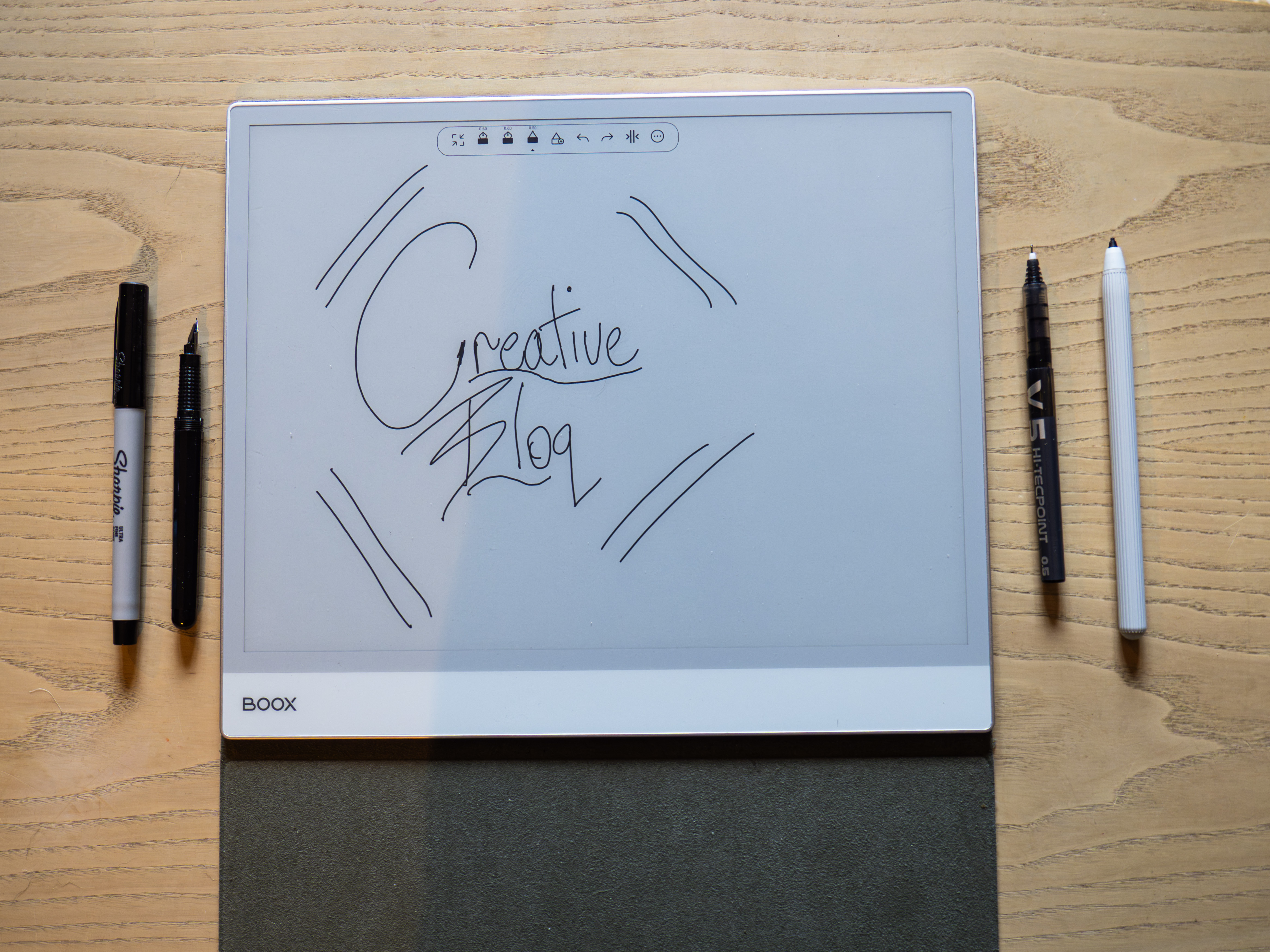Our Verdict
The idea of a productivity e-reader is a sound one, proven by the likes of reMarkable. Done right, they’re brilliant for taking handwritten notes and light word-processing. With the Boox Note Max, Onyx has thrown its hat into the ring with a customary full-fat Android flavour. And while it is good for taking notes, it tries a little too much and is too inconsistent to make an instant recommendation. With software updates the picture may change, but there’s currently better options available for less.
For
- Thin and light
- Nice for reading
- Can be used for multiple tasks
Against
- Screen too slow for many tasks
- No volume rocker
- Awkward question of long-term software support
Why you can trust Creative Bloq
It’s a tale as old as time itself, or at least as long as the history of paper.
You write notes, then more notes, notes on notes, you work through your notebook, across a busy day, recording everything of importance. Every action, every outcome, whatever might be useful later on.
But then at the end of that day you aren’t feeling it, organising your work can wait until tomorrow. Rinse, recycle and repeat, then you have my schedule down to a tee. Your notes are a mad, senseless jumble written diagonally in font that barely qualifies as legible even by doctor standards. Enter the digital notepad, a relatively new product category that promises to bring sense to your mad gadfly life.
The Boox Note Max is the latest such example from Onyx, purveyor of all things e-paper. It’s the size of a sheet of A4, and so therefore purports to fulfill the same role in your life.
It doesn’t have any of the usual marketing terms attached, there’s no HDR, no high refresh rates, nothing to set the pulse racing. It has three claims to fame, it’s big, it has a pen and it runs Android. Given that many e-readers or devices that are e-reader adjacent, that in itself is a bigger sell than you might first think.
But Onyx is hardly the first company to tread this path, Remarkable, Amazon and others have already thrown their hats in the ring. The question then, does this justify the relatively high price of entry? Can it distinguish itself from the competition, and be our writing/note-taking recommendation among the best tablets for drawing?
Read on for our full review.
Daily design news, reviews, how-tos and more, as picked by the editors.
Onyx Boox Note Max review: Key specifications

CPU: | 2.8Ghz Octa-core + BSR |
Memory: | 6GB |
Storage: | 128GB |
Screen size: | 13.3in Carta 1300 glass screen |
Screen type: | Touchscreen |
Resolution: | 3200 x 2400 |
Ports: | USB-C |
Wireless connectivity: | Wi-Fi, Bluetooth 5.0 |
Dimensions: | 287.5 x 243 x 4.6mm |
Weight: | 615g |
Design, build and display
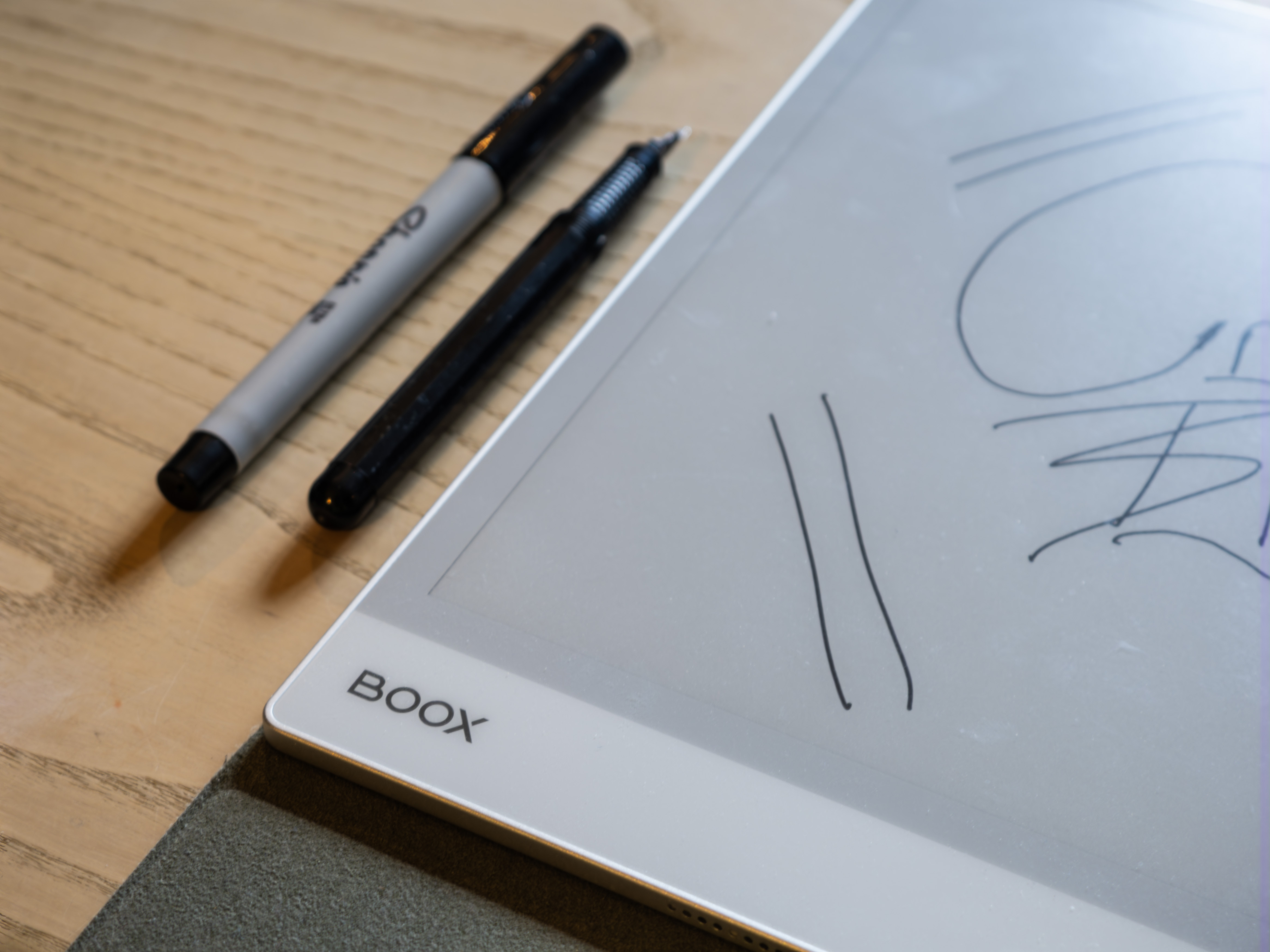
• Thin and light
• No backlight on display
For an e-reader of any size, there’s a few key considerations when the question comes to design. It needs to be light, it needs to be robust and most importantly, it needs to be useful.
So does the Boox hit the mark? It certainly makes for a good first impression. If you haven’t used an e-reader of this size before, the first thing that will hit you is the thinness, and after that the weight or lack thereof.
Compared to a standard tablet, there’s less to ‘fit’ in, no multiple cameras, no complications. Just a power button, a volume rocker and a USB-C port, plus a speaker. In all it’s about the size of a standard small laptop screen, or an A4 sheet of paper, and it’s comfortable to pick up and use.
Which is very important given that it’s intended to serve in part as a digital clipboard. Or a doodle board, anything which involves holding it while walking for any length of time. And by those metrics, at a weight of 615g, I found it to be a success.
Moreover, it looks and feels solid, this isn’t a cheap device and very importantly, it doesn’t feel cheap. That isn’t to say that it is the very essence of luxury, but it doesn’t feel toy-like or hollow.
Unfortunately, the same can’t be said of the included pen, which is a little awkward and could be a little more slimline given the fact that it contains no electronics within. There’s no Bluetooth, no chip, just a pencil tip. That it is then a very chunky pencil will be something of a switch off for many, not least due to the fact that it isn’t cheap to replace.
Coming to the display, forget all of your received wisdom about what a tablet should be able to achieve. This is a device for reading and writing only. It is possible to play a YouTube video given that this runs Android, but to do so is lunacy verging on madness.
First, it’s sharp, pleasantly so. Reading, as should be expected, is a treat, however, there’s a caveat: the device is without a backlight. So if you would like to read in bed, you’ll need a light, and it does limit applications in less-than-stellar lighting conditions.
Where it falls down is with the refresh rate. There are e-reader screens which have relatively fast refresh rates; this is not one of them. It leaves the device feeling more than a little sluggish in general use, which is frustrating if you are trying to take notes at any kind of pace.
On more than one occasion, the screen refreshed while I was writing, causing me to lose some of what had already been taken down. That included at several points during complex meetings, so therefore somewhat defeating the point of it as a notebook.
I also found that the palm rejection on the screen wasn’t the best; sometimes moving my hand to jot on a far corner of the screen would cause the page to jump forward, sometimes several times.
And these concerns matter, because this isn’t your typical e-reader; it wants to be something more. Running Android, you can install apps, use them nearly as you would on almost any Android device. That the Boox isn’t responsive leaves it feeling sluggish even on tasks such as entering a screen pin. Given the price of entry, that’s a bitter pill to swallow.
One big positive is the notched glass used for the main display, which results in a pleasant sensation reminiscent of writing on paper.
Design score: 4/5
Features
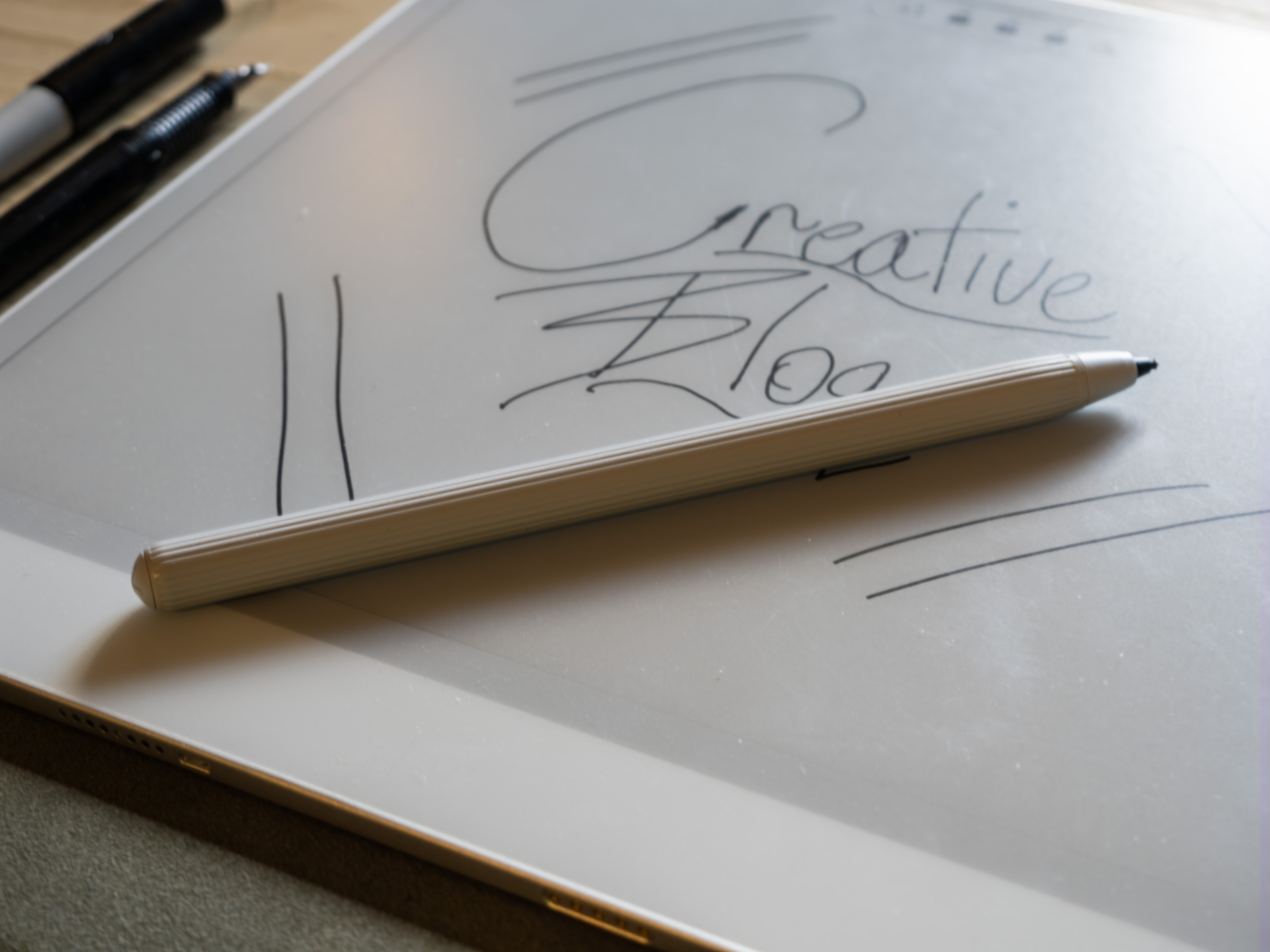
- Runs Android 13
- Can sync docs to Onyx Cloud
The headline feature of the Boox is simple: it runs Android. And let’s be clear, that really is a headline feature. Many e-readers come locked down and running custom software; here, you are limited, theoretically, to what’s available on the Play Store. Want to open e-pubs? Download Lithium. Fancy reading magazines? There’s an app for that; you can even listen to audiobooks through Spotify.
That also opens up a host of integration with the likes of the Office 365 suite, making the Boox potentially very useful from a productivity perspective; however, I found that the promise didn’t really live up to the reality. The main reason for that? The responsiveness. If you want to make edits to a document, make switches, you need precision and you need to be able to work with speed, that just isn’t possible with the Boox.
And while Android does open up possibilities, those mostly pertain to tasks that involve reading in some capacity. Gaming is pretty much out of the question, as might be expected, so although more is promised, it’s impossible to actually deliver.
What would have been nice to see is whether wirelessly or wired, the option for the Boox to act as a secondary display for a PC. This would have been a genuine value add for many work-from-home setups, for anyone who regularly works with docs, and the use of a mouse addressing many of the issues resulting from the slow touch response. This set-up is possible in a way with the use of third-party apps from the Play Store, however, the experience is subpar.
Thankfully, Bluetooth performance was decent, and moreover, the inclusion of speakers makes the Boox a surprisingly good audiobook device, too. The speakers are stereo, although they fire downwards and manage some stereo separation and get quite loud. A real inconvenience is the lack of a volume rocke;r however, volume can only be controlled by a fiddly slider on the notifications shade, which, given the lack of touch responsiveness, takes a while to summon.
Features score: 3/5
Performance
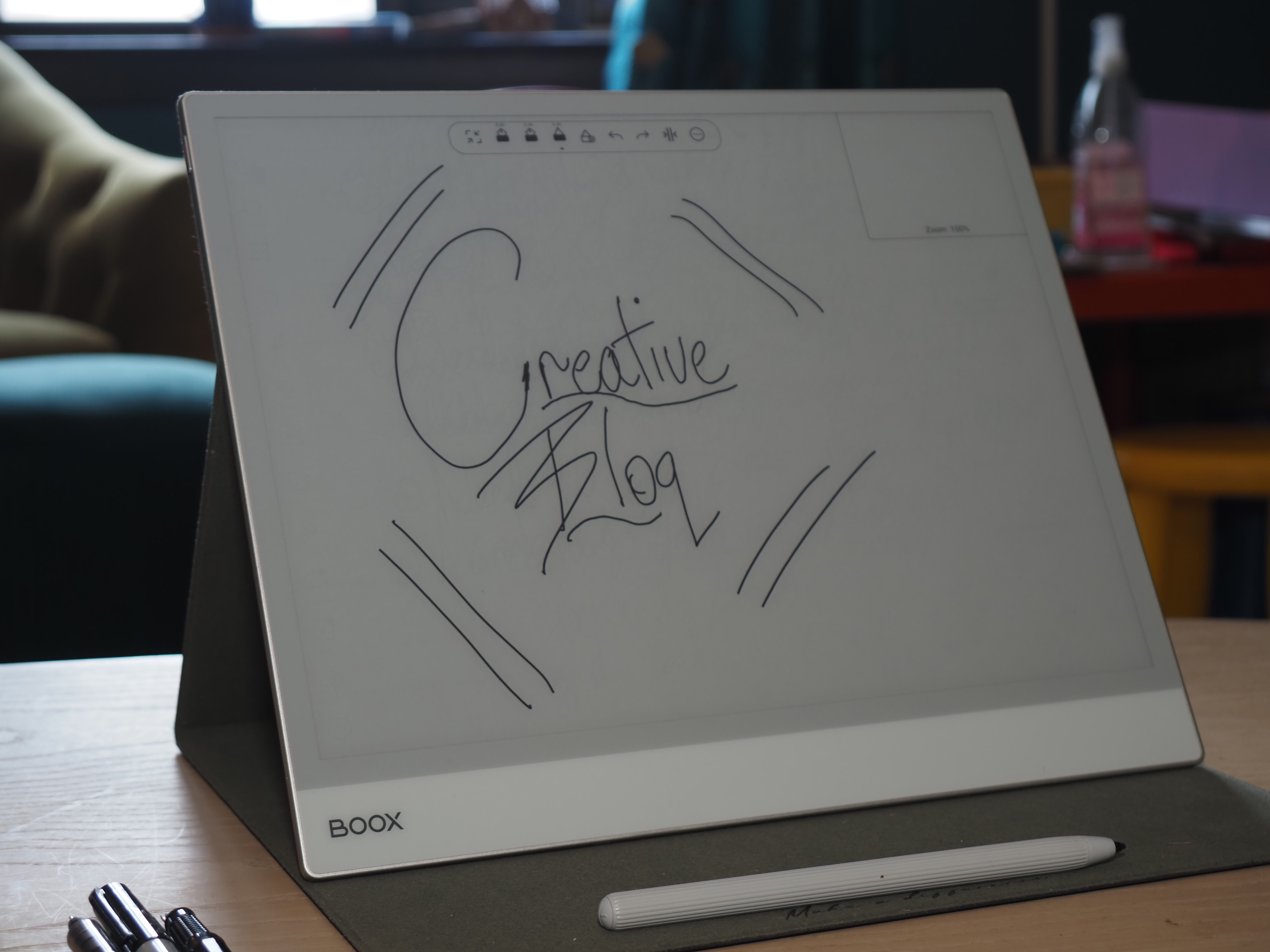
- 6GB RAM and 128GB storage
- 2.8Ghz octa-core processor
Though the Boox does a little to cosplay as an Android tablet, there’s incontrovertible proof that it isn’t one. It’s an e-reader on steroids rather than a fully fledged multi-purpose device. So certain expectations that might say, come with the territory, are therefore not a given.
Case in point, benchmarking applications, at least the usual testing suite, refused to complete. As such, the impressions of performance here are exactly that and should be treated as subjective. The fact remains that with an ‘octa-core processor’, 128GB of storage and 8GB of RAM, the Onyx has enough oomph to make Android work, if not fly.
Thanks to the relatively slow screen, the experience of using the device always feels that way, objectively. I found myself waiting a beat every time, sometimes more, for it to catch up and/or refresh.
Truthfully, no one is buying an e-reader to do something that requires power, like video editing or playing advanced games, but the Boox Max is a very good reminder of why that’s the case.
In the likes of work tasks, it proved to be generally fast enough, but again with the caveat that you’ll be waiting for the screen to catch up every time. And every missed second adds up to multiple minutes, and often feels like a lot longer.
If you’re reading or taking notes, you’ll be fine. Should your use case be a bit more intensive, I’d advise caution before plunging in.
Performance score: 2/5
Price
The Boox Note Max retails from the Euro store at €629.99 for the standard bundle, which includes a cover and a pen.
That’s substantially more than the £389 charged by reMarkable for its ‘2’ e-reader with the same functions, and also more than the £379.99 Amazon asks for the Kindle Scribe. Neither of those run Android, however they have superior support options, not least for software longevity - Boox doesn’t have a great track record at keeping its products up to date.
Who is it for?
Writing obsessives - If you’re the kind of person who writes a lot, who just doesn’t get the same rush from taking notes with a keyboard, who wants the certainty of having something written down, the Boox Note Max is made for you. If you don’t value handwritten notes, if you just want an e-reader, there’s other, better, options available and at lower price points.
Scorecard
Design: | Thin, practical and pleasant. | 4/5 |
Features: | Android a nice idea that doesn't have great execution here. | 3/5 |
Performance: | Can't really keep up with its software. | 2/5 |
Value: | Cheaper options can perform the same core tasks. | 2/5 |
Buy it if
- You want a very big ereader
- You religiously take handwritten notes
- You need Android on an ereader
Don't buy it if
- You need a multipurpose device
- You want something that operates quickly
- You want a device with long-term software support
Also consider

The reMarkable 2 offers very strong competition to the Boox Max, not least because it is cheaper. It has a fraction of the RAM and a less powerful processor, but also has software specifically crafted for it. For the core function of recording written notes, it works with aplomb, and it’s an e-reader too. It doesn’t run Android, but whether that’s worth the over £200 markup for the Boox Max will be up to you to decide.
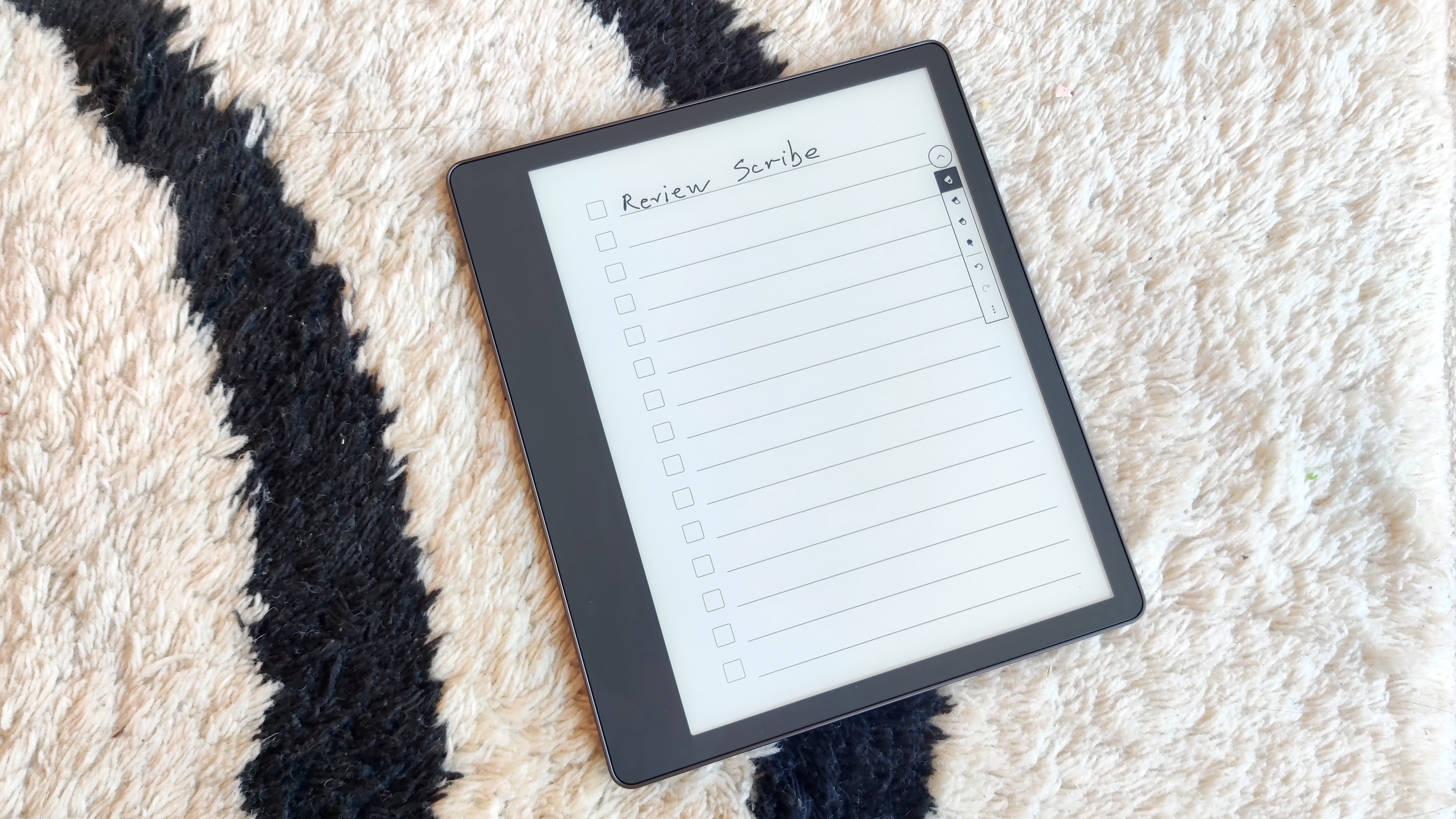
The Kindle Scribe is similar to the reMarkable 2 in that it performs the same core function of recognising handwritten notes for a much reduced price compared to the Boox Max. It also has the advantage of being designed by the Kindle team, who have generations of experience in making e-readers. Again it doesn’t run the same software as the Boox Max, but whether that’s an issue is once again up to you.
Pros
- Big screen
- Freedom to annotate
- Multiple storage options
Cons
- Notes can feel restrictive
- Price veers into iPad territory

If you want something that can take written notes like a champ and still work as a tablet, the NXTPaper 14 will likely be of interest. It beats the Boox Max at the tablet game, plus it makes a decent fist of being an e-reader. Some will prefer the ‘purity’ of a device focussed around a specific task, however if you need versatility, this should be on your list, not least as it is over £200 less than the Note Max.
out of 10
The idea of a productivity e-reader is a sound one, proven by the likes of reMarkable. Done right, they’re brilliant for taking handwritten notes and light word-processing. With the Boox Note Max, Onyx has thrown its hat into the ring with a customary full-fat Android flavour. And while it is good for taking notes, it tries a little too much and is too inconsistent to make an instant recommendation. With software updates the picture may change, but there’s currently better options available for less.

Erlingur is the Tech Reviews Editor on Creative Bloq. Having worked on magazines devoted to Photoshop, films, history, and science for over 15 years, as well as working on Digital Camera World and Top Ten Reviews in more recent times, Erlingur has developed a passion for finding tech that helps people do their job, whatever it may be. He loves putting things to the test and seeing if they're all hyped up to be, to make sure people are getting what they're promised. Still can't get his wifi-only printer to connect to his computer.
You must confirm your public display name before commenting
Please logout and then login again, you will then be prompted to enter your display name.
